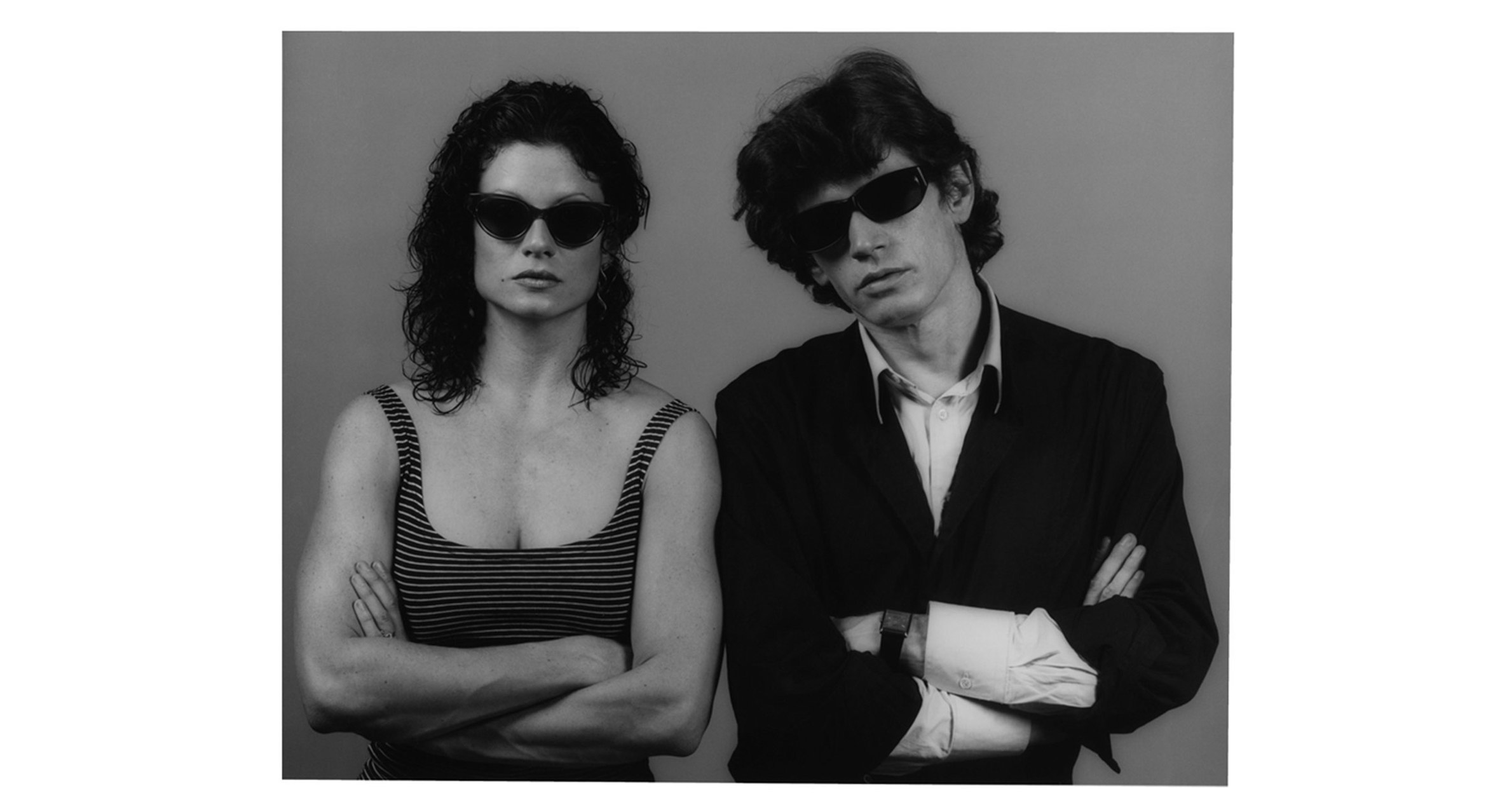
Robert Mapplethorpe / Lisa Lyon and Robert Mapplethorpe, 1982, Silver Gelatin, 20 x 16 in (50.8 x 40.6 cm), Edition 9/10. Courtesy: The Robert Mapplethorpe Foundation, New York, and Alison Jacques, London © Robert Mapplethorpe Foundation. Used by permission
Robert Mapplethorpe: ‘Subject Object Image’
Ever since in the early 19th century Nicéphore Niépce captured on paper his view from a window, photography has been in close proximity to magic.
During a 1988 BBC Arena documentary, Robert Mapplethorpe, one of its great unapologetic and provocative voices who challenged societal norms and pushed boundaries, considered his own relations with the M-word.
“If you say too much, you lose some of the mystery that ends up being there. Somehow I am able to pick up the magic of the moment and work with it. That’s my rush in doing photography; you can get to a place where you can do it with a flower, with a cock, with a portrait… You’ve tapped into a space that is magic.”

Robert Mapplethorpe / Andy Warhol, 1983, Silver Gelatin, 24 x 20 in (61 x 50.8 cm), Edition 7/10. Courtesy: The Robert Mapplethorpe Foundation, New York, and Alison Jacques, London © Robert Mapplethorpe Foundation. Used by permission
Call it magic squared that Robert Mapplethorpe: ‘Subject Object Image’ – a show at Alison Jacques, 22 Cork Street – includes many works that have not been widely exhibited before. Somewhat remarkable, for an artist with such a canon. Including still lifes created using everyday objects – Italian glass, antique silver and classical statuary – some of which Mapplethorpe collected together with his long-term partner, Sam Wagstaff.
Spanning 18 years of Mapplethorpe’s life, and the breadth of his subject matter, ‘Subject Object Image’ begins in 1976 when Mapplethorpe had already evolved from Polaroids and begun using a Hasselblad 500 camera. It concludes with work made in the year before his tragic death in 1989 at the age of only 42. The exhibition marks 24 years of collaboration between Alison Jacques and The Robert Mapplethorpe Foundation.
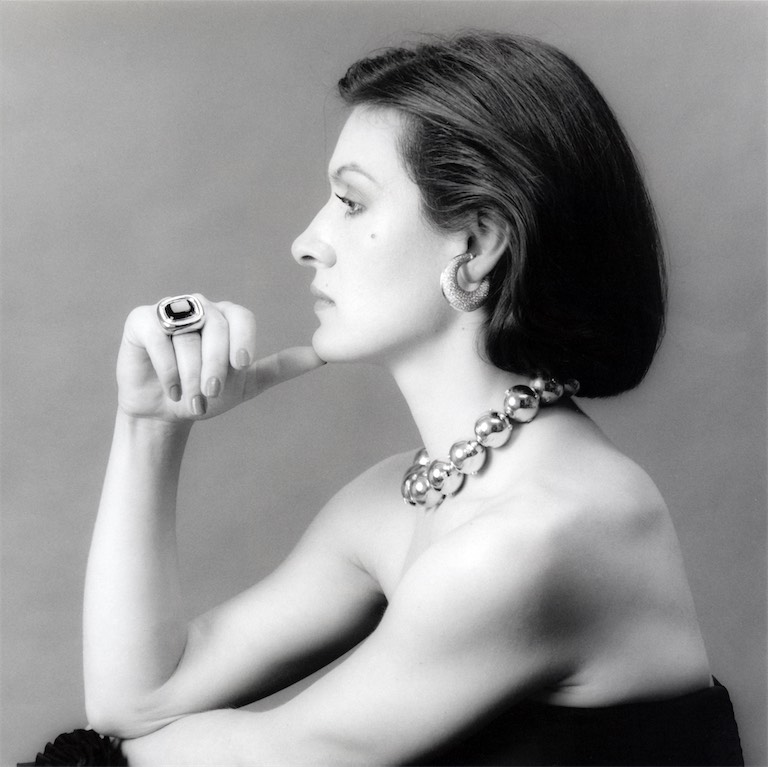
Robert Mapplethorpe / Paloma Picasso, 1980, Silver Gelatin, 20 x 16 in (50.8 x 40.6 cm), Edition 7/10. Courtesy: The Robert Mapplethorpe Foundation, New York, and Alison Jacques, London © Robert Mapplethorpe Foundation. Used by permission
Additional focus is drawn to Mapplethorpe’s portraiture of artists and creatives from New York in the 1970s and 80s, including Yoko Ono, Paloma Picasso and Andy Warhol. While a grouping of four portraits of Arnold Schwarzenegger from a single shoot are shown alongside the artist’s intimate circle including his brother Edward, his lovers Milton Moore and Jack Walls, and poet and musician Patti Smith. Many of these portrait sessions were held in his fifth floor studio at 24 Bond Street, Lower Manhattan.
As Mapplethorpe voiced to the BBC in the rare occasion he spoke on film: “I captured New York of its time.”
Look again at the hang to witness a certain Cork Street icon, whose legendary gallery inhabited no. 21 and championed then-emerging artists Jean-Michel Basquiat and Keith Haring.

Robert Mapplethorpe / Yoko Ono, 1988, Silver Gelatin, 24 x 20 in (61 x 50.8 cm), Edition 6/10. Courtesy: The Robert Mapplethorpe Foundation, New York, and Alison Jacques, London © Robert Mapplethorpe Foundation. Used by permission
Mapplethorpe personally lived a life of contradictions, existing in different worlds, from the uptown glamour, fame and intelligentsia of Manhattan, to the hedonism of Studio 54, drugs and open sexual activity, and the underground BDSM subculture. His vision was a relentless pursuit of aesthetic equilibrium through meticulous attention to detail, lighting, and composition. This brought a sense of formality and precision to his subjects, often portraying them as inanimate objects. Mapplethorpe stated in 1983, “I’m trying to make sculpture without having to sculpt. I’m trying to get the head in just the right spot where everything looks perfect. I’m looking for perfection in form… It’s no different from one subject to the next…”
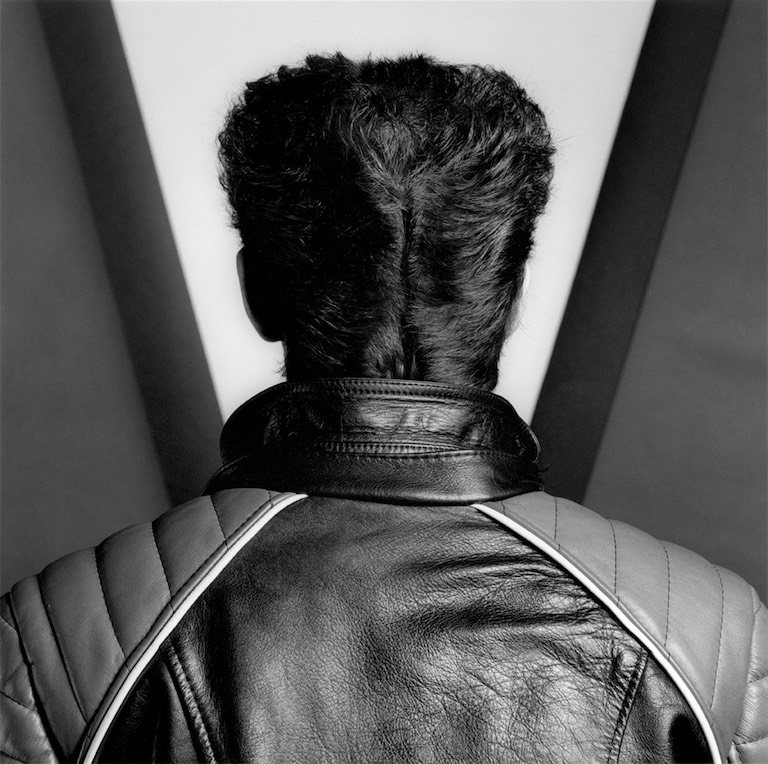
Robert Mapplethorpe / Self Portrait, 1981, Silver Gelatin, 20 x 16 in (50.8 x 40.6 cm), Edition 7/10. Courtesy: The Robert Mapplethorpe Foundation, New York, and Alison Jacques, London © Robert Mapplethorpe Foundation. Used by permission
Throughout ‘Subject Object Image’, Mapplethorpe’s focus on the nude is evident, from the recurrent male muses – Ajitto, Derrick Cross and Ken Moody – whose portraits have become synonymous with Mapplethorpe’s photography, to female models including bodybuilder Lisa Lyon. They demand that the viewer reconsider perceptions of the human body and its beauty. Rare Dye-transfer colour photographs portraying flowers, including orchids and roses, as erotically beautiful, punctuate the otherwise monochromatic works grouped together in the exhibition.

Robert Mapplethorpe / Alistair Butler, 1980, Silver Gelatin, 20 x 16 in (50.8 x 40.7 cm), Edition 15/15. Courtesy: The Robert Mapplethorpe Foundation, New York, and Alison Jacques, London © Robert Mapplethorpe Foundation. Used by permission
Mapplethorpe’s still lifes, flowers and portraits fall within the same tradition of the memento mori – they are reflections on the inevitability of death, but also celebrations of the potential abundance of life that precedes it. The fact that Mapplethorpe’s legacy is so renowned is testament to his enduring belief that beauty and “perfection in form” can be found in any walk of life.
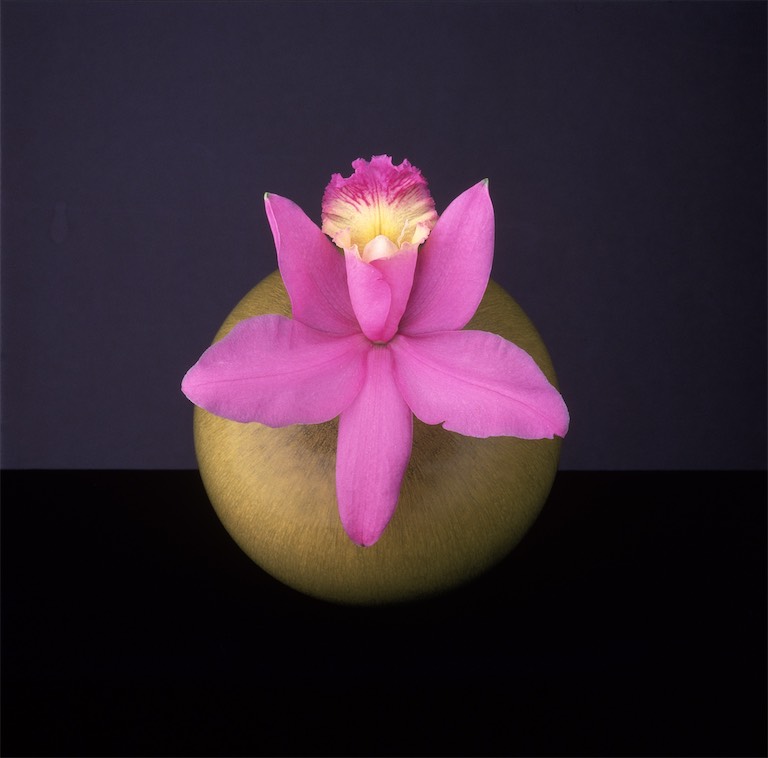
Robert Mapplethorpe / Orchid, 1987, Dye Transfer, 24 x 20 in (61 x 50.8 cm). Courtesy: The Robert Mapplethorpe Foundation, New York, and Alison Jacques, London © Robert Mapplethorpe Foundation. Used by permission
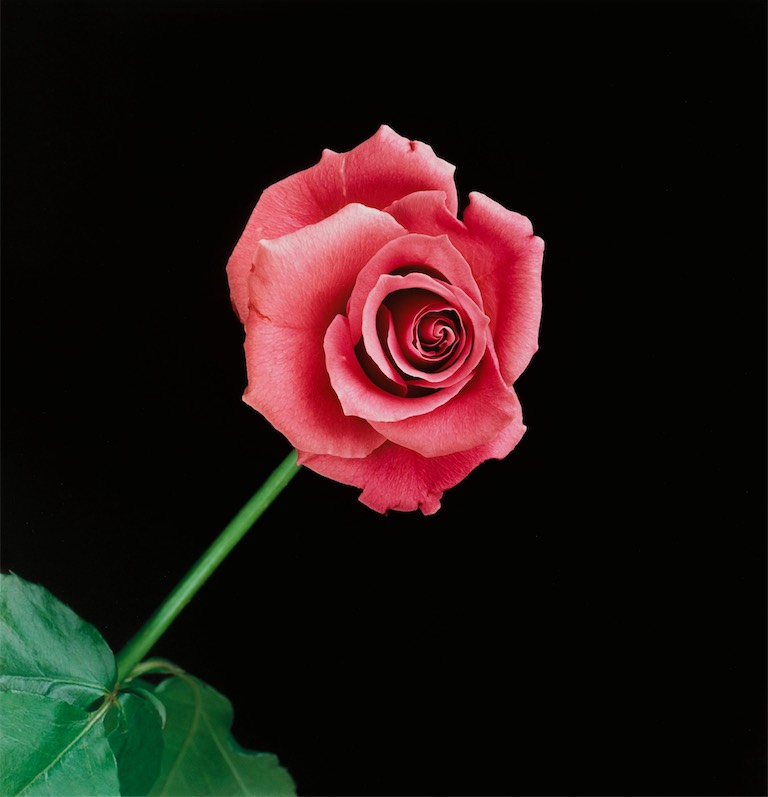
Robert Mapplethorpe / Rose, 1989, Dye Transfer, 30 x 24 in (76.2 x 61 cm). Courtesy: The Robert Mapplethorpe Foundation, New York, and Alison Jacques, London © Robert Mapplethorpe Foundation. Used by permission
Robert Mapplethorpe was born in Floral Park, Queens, New York (1946). A strictly Catholic and suburban upbringing led him to leave home at age 16 and enrol at the Pratt Institute in Brooklyn, to study Advertising Design before transferring to Graphic Arts. His first solo exhibition, ‘Polaroids’ at Light Gallery took place in 1973, and subsequent shows followed at Holly Solomon Gallery and The Kitchen. In 1977, Mapplethorpe participated in ‘Documenta 6’ in Kassel, Germany, followed later in Europe with a solo exhibition at the Institute of Contemporary Arts, London (1983). London’s support for Mapplethorpe continued with a survey of his portraits at the National Portrait Gallery (1988). The year before Mapplethorpe’s death from AIDS-related complications, The Whitney Museum of American Art mounted Mapplethorpe’s first major American museum retrospective (1988). It was followed by the exhibition ‘The Perfect Moment’ in December 1989, at the Institute of Contemporary Art in Philadelphia. This exhibition toured in the United States and created one of the fiercest episodes of America’s “Culture Wars” – joining a recurring debate about federally-funded cultural projects and support of homoerotic, sexually explicit or perceived sacrilegious art.

Robert Mapplethorpe / Derrick Cross, 1983, Silver Gelatin, 20.1 x 16.1 in (51 x 41 cm). Courtesy: The Robert Mapplethorpe Foundation, New York, and Alison Jacques, London © Robert Mapplethorpe Foundation. Used by permission
Robert Mapplethorpe established The Robert Mapplethorpe Foundation on May 27, 1988, the year before his death, to protect his work, to advance his creative vision and to promote the causes he cared about. Serving as the first president of its board of trustees, he established two mandates: to promote photography as an art form in order to achieve its recognition and respect at the same level as painting and sculpture; and to financially support HIV/AIDS medical research. 34 years later, in keeping with Mapplethorpe’s wishes, The Robert Mapplethorpe Foundation, stewarded by Michael Ward Stout, continues to support photography programming at major museums as well as small institutions, for exhibitions, acquisitions, and publications. The Foundation has donated millions of dollars to fund medical research to help eradicate HIV and AIDS which killed over 100,000 people during Mapplethorpe’s lifetime.
Robert Mapplethorpe: ‘Subject Object Image’ continues until 20 January 2024 at Alison Jacques, 22 Cork Street, Mayfair


